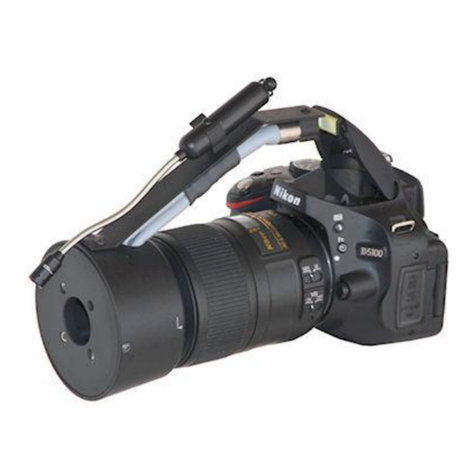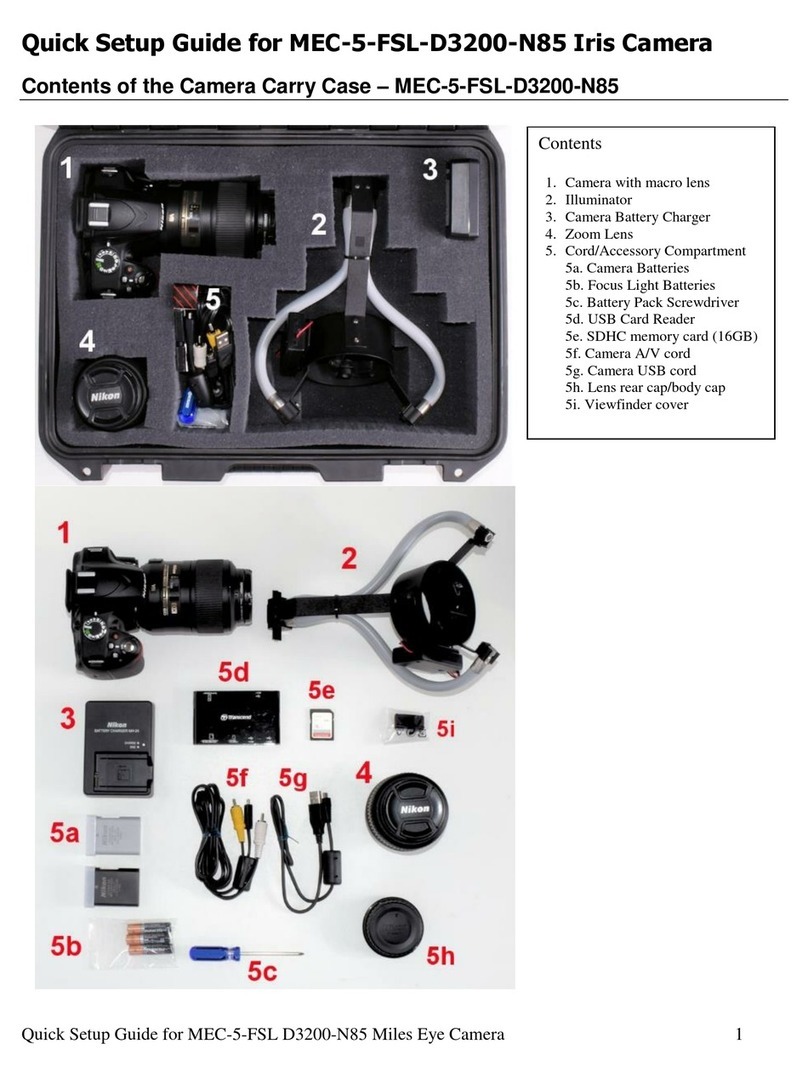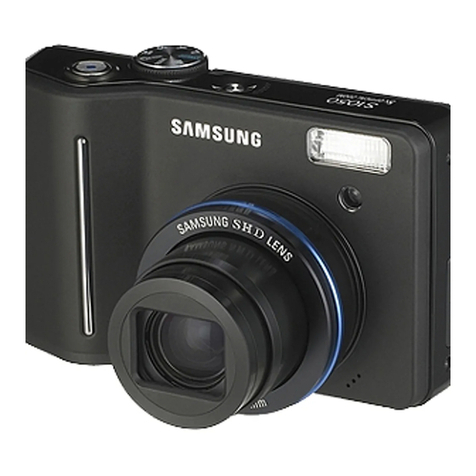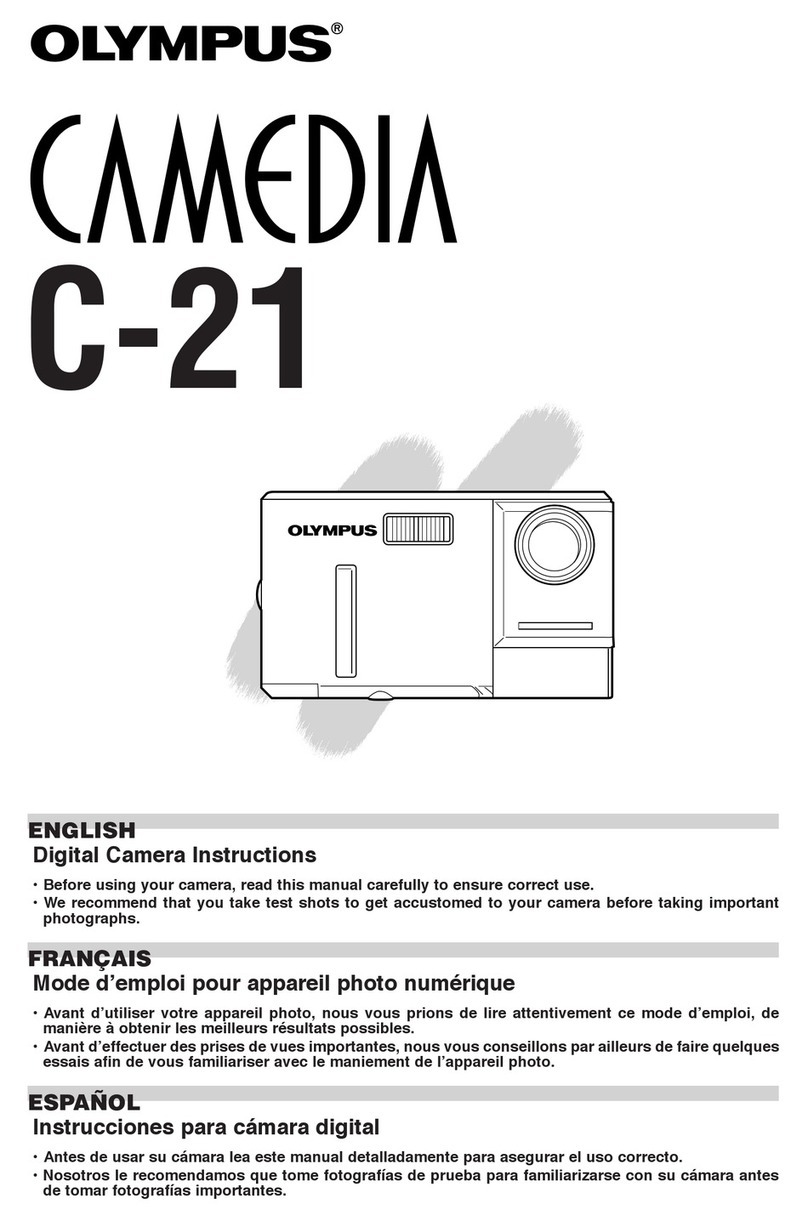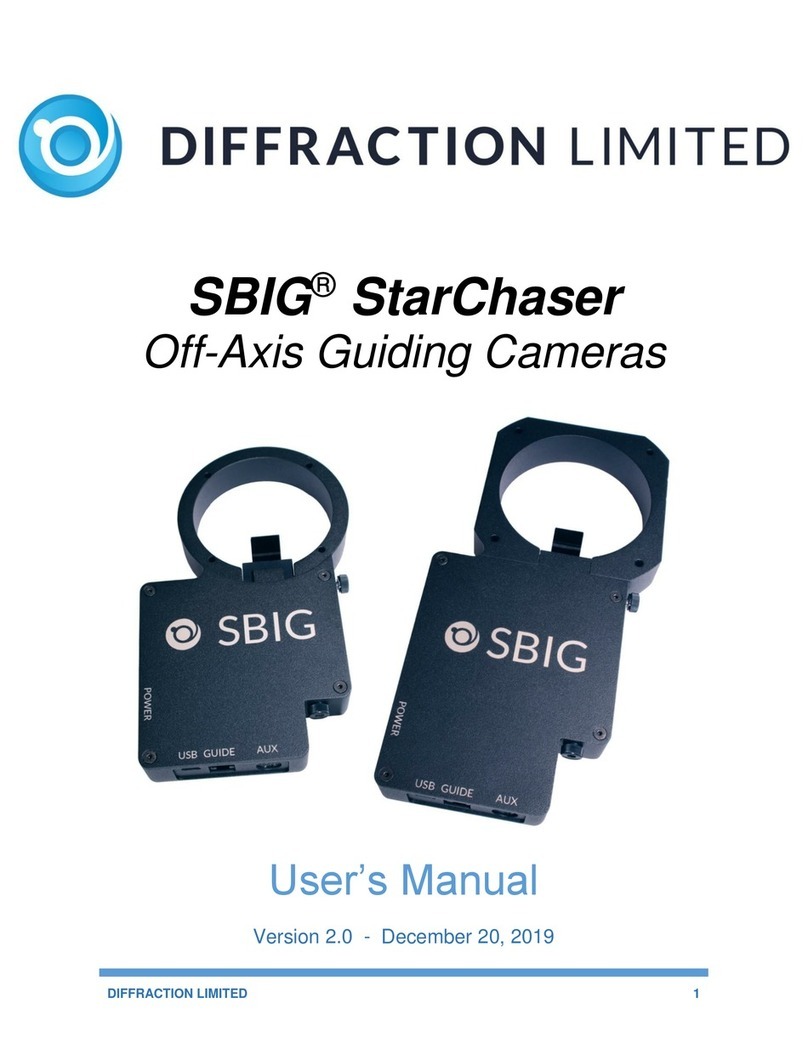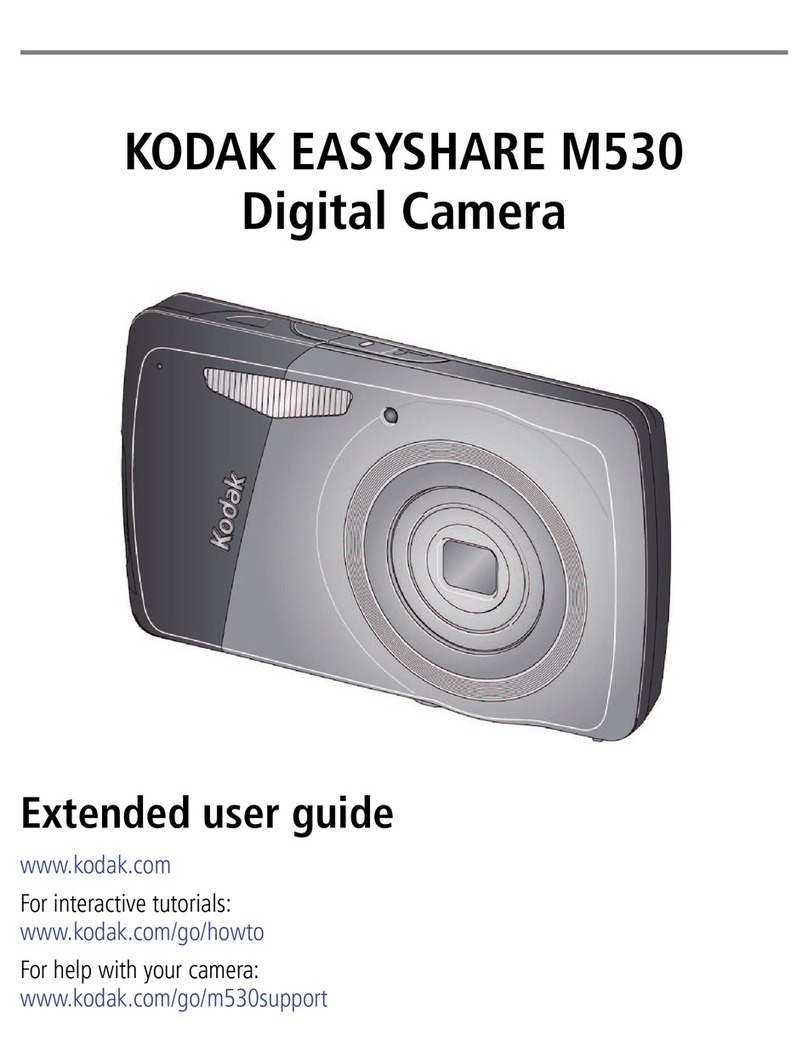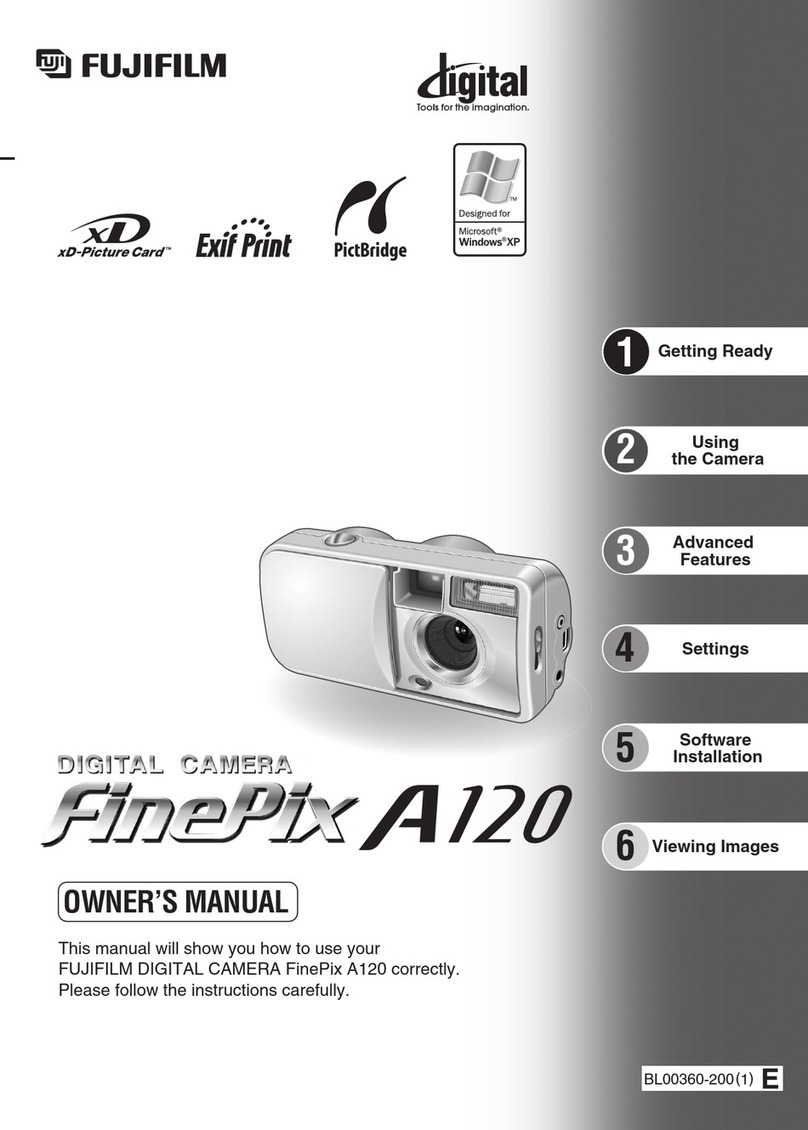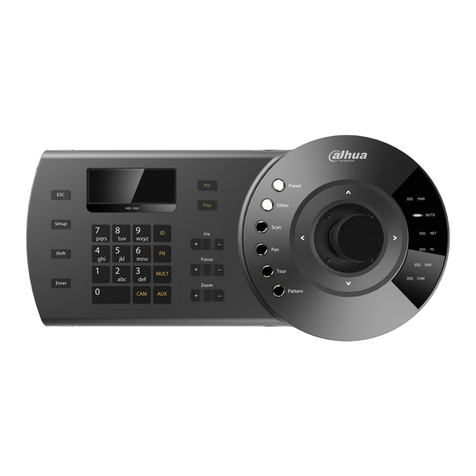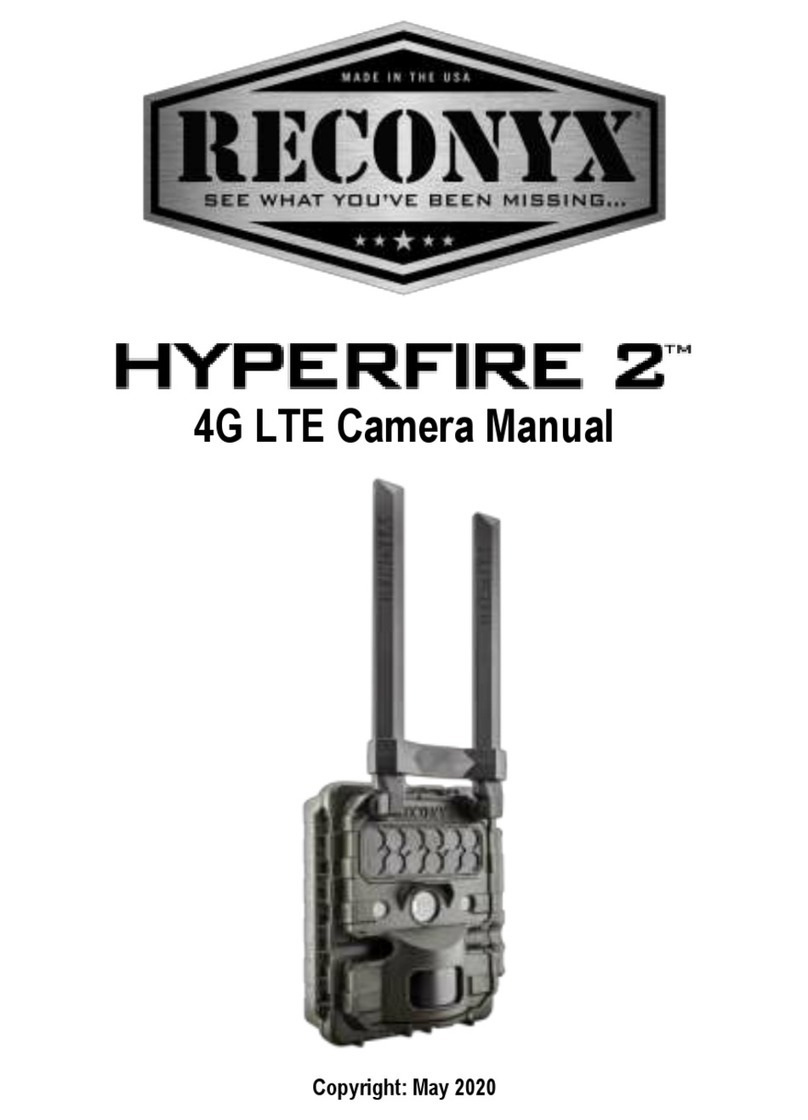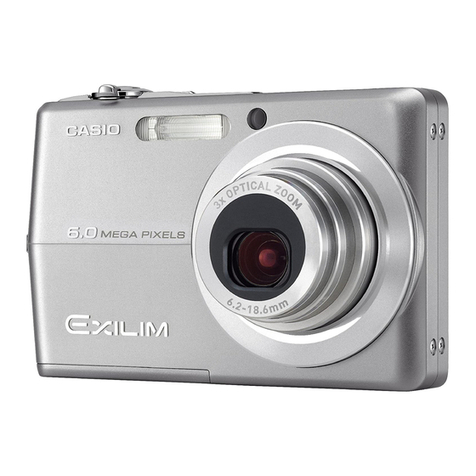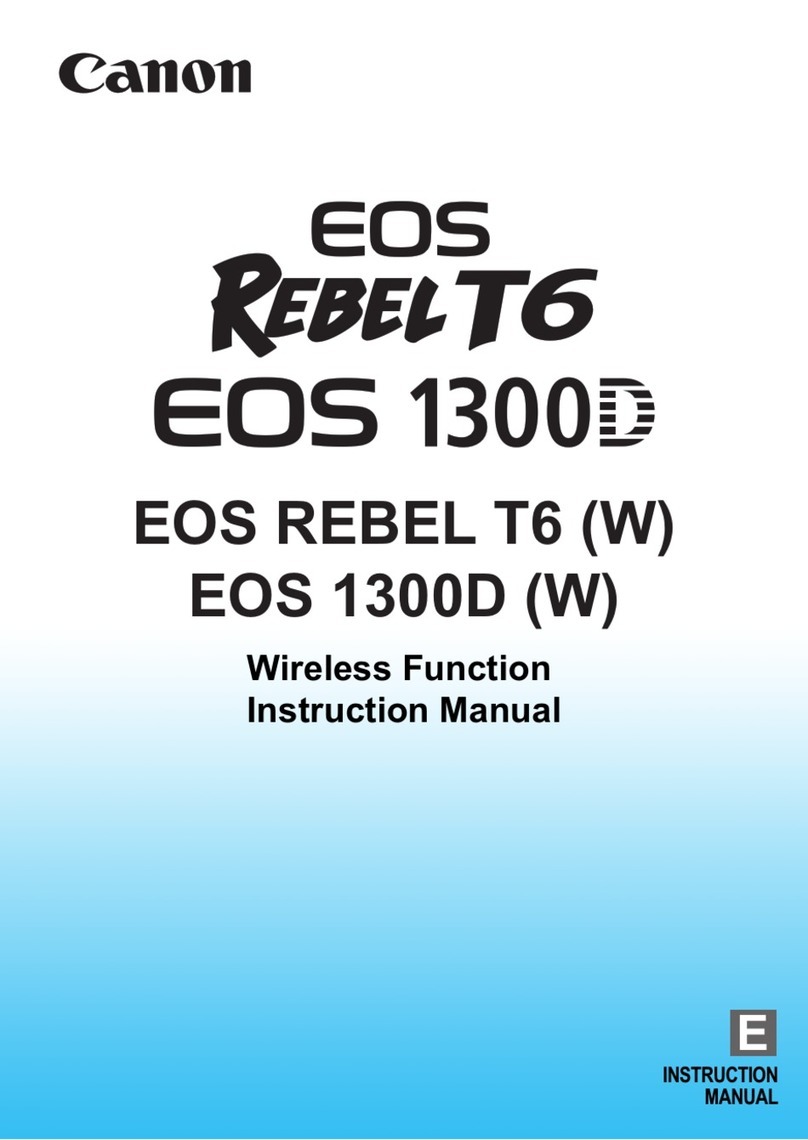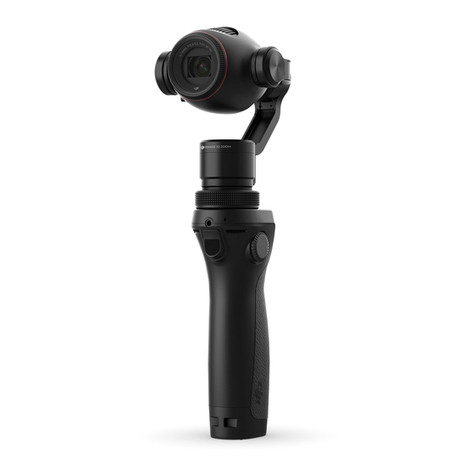Miles Research Iris MEC-5-FSL-D3400-N85 User manual

Quick Setup Guide for MEC-5-FSL D3400-N85 Miles Eye Camera 1
Quick Setup Guide for MEC-5-FSL-D3400-N85 Iris Camera
Contents of the Camera Carry Case –MEC-5-FSL-D3400-N85
Contents
1. Camera with macro lens
2. Illuminator
3. Camera Battery Charger
4. Zoom Lens
5. Cord/Accessory Compartment
5a. Camera Batteries
5b. Focus Light Batteries
5c. Battery Pack Screwdriver
5d. USB Card Reader
5e. SDHC memory card (16GB)
5f. Camera USB cord
5g. Lens rear cap/body cap
5h. Extra cords (optional)

Quick Setup Guide for MEC-5-FSL D3400-N85 Miles Eye Camera 2
Preparing the Iris Camera for Use –MEC-5-FSL-D3400-N85
1. Open Camera Carry Case by pressing the button and lifting up each latch.
2. Remove the camera from the foam padding and set down.
3. Lift Illuminator out of foam-padded case

Quick Setup Guide for MEC-5-FSL D3400-N85 Miles Eye Camera 3
4. Remove lens cap and turn the camera on. Mode dial is set to A=Aperture priority
5. Pop up the built-in flash by pressing button on left side
6. Place illuminator onto lens at the 9:00 position (Flash is in the up position, Mode=A):

Quick Setup Guide for MEC-5-FSL D3400-N85 Miles Eye Camera 4
7. Rotate Illuminator until it snaps into place at 12:00 position:
8. Turn ON the focus light by rotating the brightness knob clockwise:
9. Your camera is now ready to take iris pictures. When complete with the photography, reverse these
steps to put the camera away.

Quick Setup Guide for MEC-5-FSL D3400-N85 Miles Eye Camera 5
Using the Dual-Channel Illuminator Shutter
1. The Side-Lighting illuminator has a shutter that controls which side the flash illumination goes to. For
photographing the RIGHT iris, use the Left Channel Open position (push slider to the LEFT); for
photographing the LEFT iris, use the Right Channel Open position (push slider to the RIGHT):
2. For “flat” or uniform illumination, use the Both Channels Open position. This is setting is when the
shutter is in the center position:
When storing the illuminator in the carry case, always return the shutter to this center position.

Quick Setup Guide for MEC-5-FSL D3400-N85 Miles Eye Camera 6
Getting Correct Exposure
Using Auto-Exposure (Recommended)
1. The camera is shipped with Auto-Exposure, via the Control for Built-in Flash set to the TTL
(Through-the Lens) setting in the Set-Up Menu. In this auto-exposure mode, the flash will
automatically be adjusted for a good exposure. The aperture should be in the range of f/16 to f/22.
2. This camera-lens-illuminator is optimized for autoexposure photography of the iris; it is especially
easy to take consistently good iris images when using the Auto-Exposure Flash Mode. In this mode the
flash power is adjusted by the camera to give a suitable exposure regardless of the aperture setting.
3. There is a tradeoff between the sharpness of a lower aperture such as 5.6 thru f/20 (sharpness improves
with a lower f/number) due to less diffraction blurring when the aperture is at the lower number, and
the depth of field, which becomes to small to get the entire iris in focus when the aperture is less than
f/16. Consequently the best overall sharpness for iris photography is between f/16 and f/25.
4. With Auto-Exposure you can dial in whatever aperture you want, but best results will be found within
this range of f/16 and f/25. Miles Research recommends f/22 for iris photography.
5. For sclera photography, having the larger depth of field is very important in order to get the entire
visible surface of the sclera (including the bulbar conjunctival vessels) in focus, so the recommended
aperture for scleral photography is the maximum aperture value –normally (with the 85mm lens) at
f/45.
Using Manual Exposure (for the Advanced User)
6. It is also possible to use Manual Exposure where the aperture can be adjusted through a range of
values and the best exposure later selected from the series of photos. For this manual exposure, set the
Flash Mode to Manual (1/2 Power). To see how the camera settings can be changed, see Section L,
Reference for Nikon D3200 Camera Settings (page 35).
7. Use the main command dial at the upper rear of the camera for adjusting the aperture.
The Main Command Dial is operated with the right thumb
and is used to adjust aperture. Normally, the best practice is
to take 3 or 4 pictures of each iris, each picture shot with a
different consecutive aperture.
The aperture dial (situated where the right thumb would
be when holding the camera with the right hand) is
changed by the thumb; clicking the wheel inboard (to left)
decreases aperture number and clicking the wheel
outboard (to the right) increases it. Larger aperture
values mean smaller aperture diameter -- less light will be
allowed in. Images with higher f/numbers will be darker
than those taken with lower f/numbers
8. Note: When using Auto-Exposure (Flash mode on TTL), you can set the aperture to any value without
affecting the exposure. However to get sufficient depth of field, set the aperture to f/20 (any value in
the range of f/16 thru f/32 will give good results). For photographing sclera, always use f/45.

Quick Setup Guide for MEC-5-FSL D3400-N85 Miles Eye Camera 7
Getting Correct Focus
Using Fixed Focus (Recommended)
1. For best results, use Fixed Focus mode, which is where the lens is set to its miminum (closest) focus,
and the whole camera-lens is moved closer or further from the iris until proper focus is viewed in the
viewfinder.
2. For using fixed focus, the lens is set to the Msetting and the lens focus is dialed to a minimum focus
(rotate focus ring all the way to 1:1, the opposite end from the “infinity” symbol), which is about 0.286
meters or 11.25 inches (as measured from the subject to the image sensor plane).
3. Hold the camera up to the client’s eye, and while viewing through the viewfinder, move closer or
further from the eye until the image is sharply in focus, then take the picture.
4. It is also possible to use manual focus.For using manual focus, the lens switch is changed from the
M/A setting to the Msetting. The focusing is accomplished by rotating the focus ring of the lens until
the iris is in focus as viewed through the viewfinder. The downside to this method is that the images
will not all be at the same magnification.
Using Auto-Focus (for the Advanced User)
5. This camera-lens-illuminator can also be used for autofocus photography of the iris, however the
autofocus is not as reliable as your own focusing. Use of Auto-Focus works fairly well with the blue
iris but often does not work with the brown iris.
6. Using Auto-Focus effectively requires considerable skill and experience and should be considered only
by the more experienced iris photographer.
For imaging animal iris, it is usually best to use autofocus, and an aperture in the range of f/32 to f/45.

Quick Setup Guide for MEC-5-FSL D3400-N85 Miles Eye Camera 8
Setting the Viewfinder Focus (very important for all users)
9. IMPORTANT: Adjust the Eyepiece Dioptric setting. (Initial Setup Only) This is a small rotary
switch to the right of the viewfinder that can go up or down through several positions, and is designed
to match the viewfinder optics to your vision. When this is set: if you see the subject in focus, the
camera sees it in focus. If you normally wear corrective lenses, always wear them when taking a
picture. To make this adjustment for your eye:
How to Set Eyepiece Focus
1. Move the rotary switch to one end of the range (all the way up
or down).
2. Look through the viewfinder at a bright surface (such as a
white wall) that is in the distance (this white surface should
appear blurry).
3. While viewing through the viewfinder, move the switch up
and down through the range of positions until you can see the
black brackets ( [ ] ) in the viewfinder with maximum
clarity and focus.
4. Note the optimal position of this switch for your vision, and
always use this setting. Once you set it for your eye’s vision,
you do not need to change it. If someone else uses the camera,
they need to find the correct setting for their vision (and when
you resume using the camera, you need to return this switch
to the setting you found for your vision).

Quick Setup Guide for MEC-5-FSL D3400-N85 Miles Eye Camera 9
Exposure Guide –Aperture Settings for Auto Exposure Mode
Camera: D3400
Lens: Nikon 85mm
Illuminator: HCB/SCL/FSL/ASL/FLO
Flash: TTL
ISO: 200
EV Step: 1/3
Brown: 16
Mixed: 18
Blue: 20
Sclera: 45
Do not use: 4.8, 5, 5.6, 6.3, 7.1, 8, 9, 10, 11, 13, 14
When flash is set to TTL (Through-the-Lens metering):
Use for all iris colors: 16 thru 25 (for max sharpness)
Use for sclera: 45 (for max depth of field)
Exposure Guide –Aperture Settings for Manual Exposure Mode
Camera: D3400
Lens: Nikon 85mm
Illuminator: HCB/SCL/FSL/ASL/FLO
Flash: Manual 1/2-Power
ISO: 200
EV Step: 1/3
Brown: 16---18---20---22---25
Mixed: 18---20---22---25---29
Blue: 20---22---25---29---32---36
Sclera: ---45
Do not use: 4.8, 5, 5.6, 6.3, 7.1, 8, 9, 10, 11, 13, 14
Use for brown: 16 thru 25
Use for blue or mixed: 18 thru 36
Use for sclera: 45
Contact Miles Research for additional information or technical support
Jon Miles
Miles Research
141 E 13th Ave
Escondido, CA 92025
760-746-7415
jon@milesresearch.com
www.milesresearch.com
Your Registration Information:
Owner: __________________
Camera System Serial Number: __________________
Camera Body Serial Number: __________________
Lens Serial Number (85mm): __________________
Lens Serial Number (18-55mm): __________________
Date Shipped: __________________
Other Miles Research Digital Camera manuals
